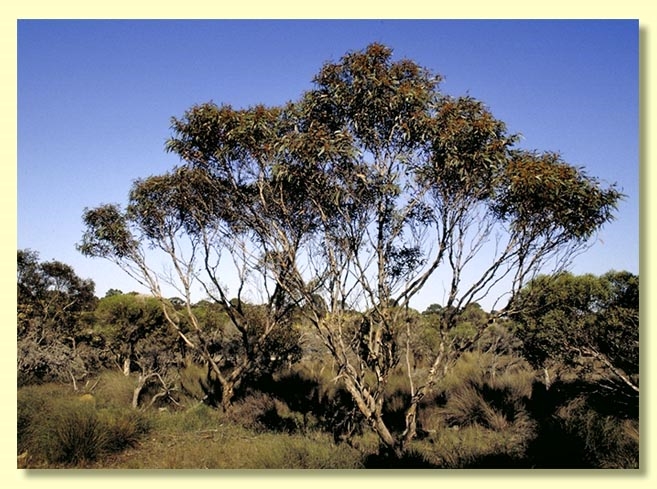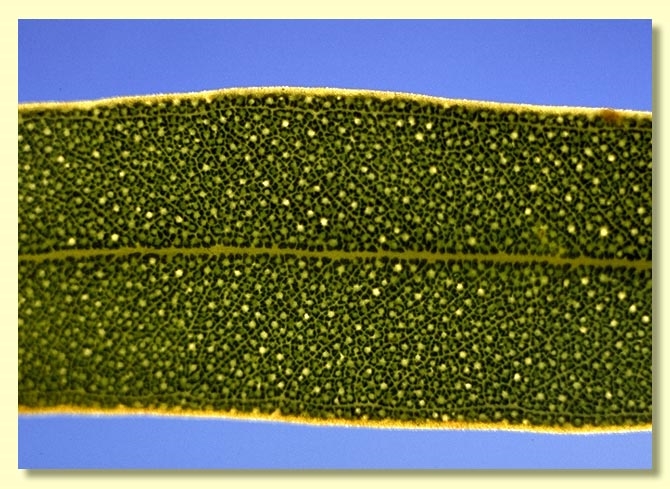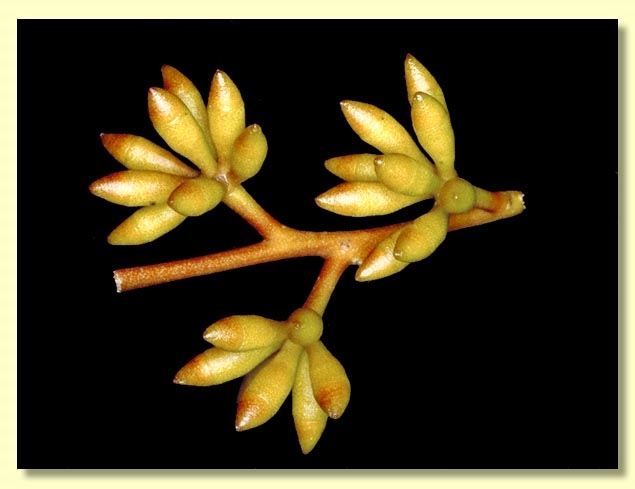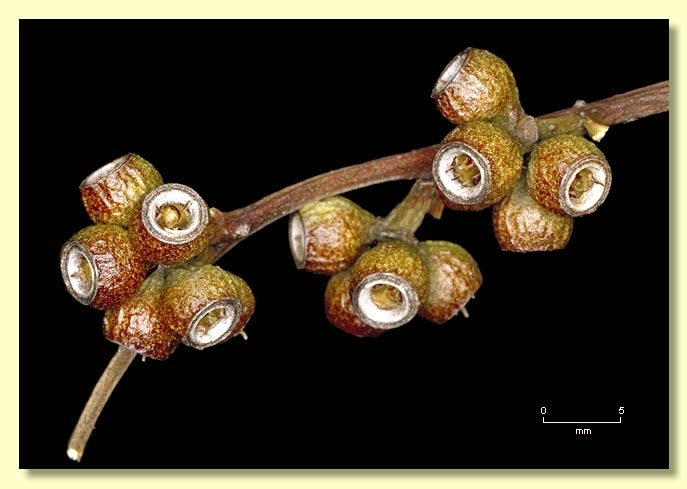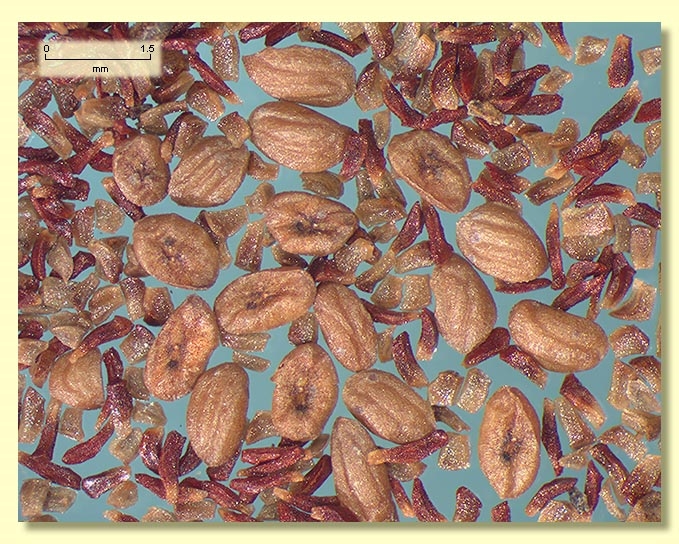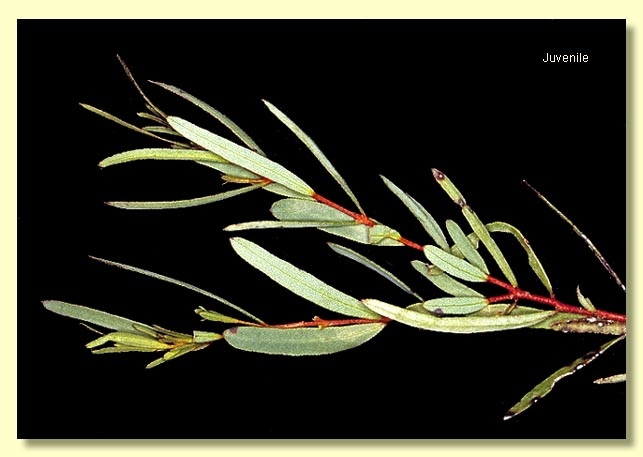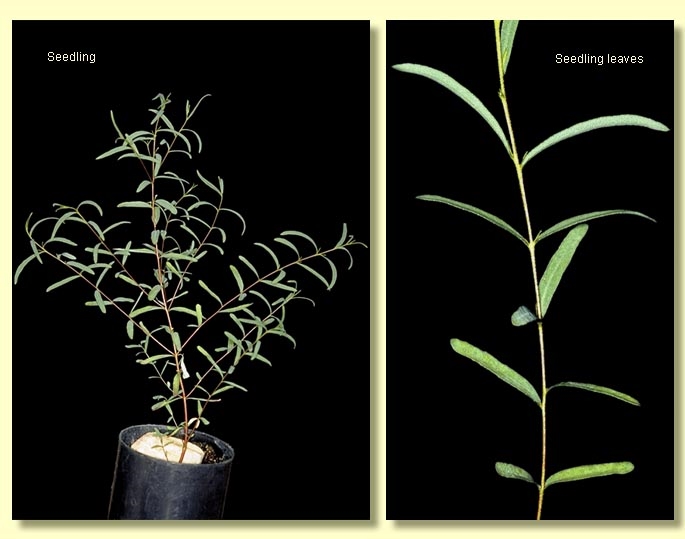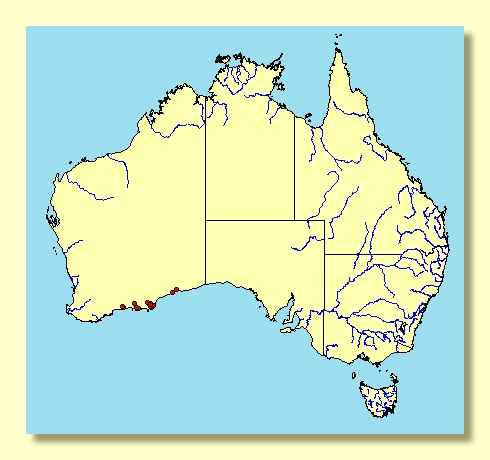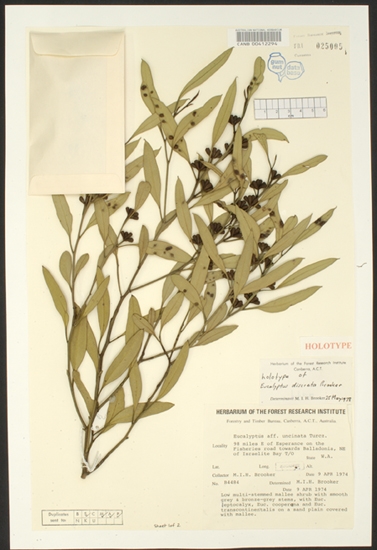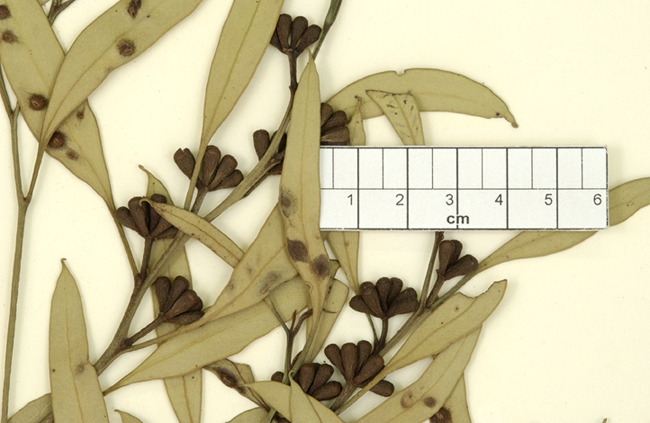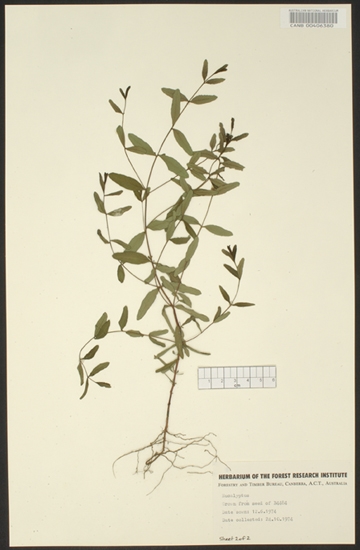Eucalyptus | Symphyomyrtus | Bisectae | Destitutae | Porantherae | Longiores
Euclid - Online edition
Eucalyptus discreta
Bark smooth throughout, creamy brown and pale grey, sometimes with persistent coarse ribbons of greyish rough bark for up to 1 m of stems.
Branchlets lacking oil glands in the pith.
Juvenile growth (coppice or field seedlings to 50 cm): stems rounded in cross-section; juvenile leaves sessile to shortly petiolate, opposite for ca 10 to 12 nodes then becoming alternate, linear to narrowly oblong or narrowly elliptic, 2.5–5.5 cm long, 0.2–1 cm wide, apex rounded and apiculate to pointed, dull, green to grey-green.
Adult leaves alternate, petioles 0.5–1.8 cm long; blade narrowly lanceolate-elliptic to curved, 4–9.5 cm long, 0.5–1.5 cm wide, base tapering to petiole, margin entire, apex finely pointed, concolorous, green, at least slightly glossy, side-veins greater than 45° to midrib, reticulation moderate to dense, intramarginal vein present, oil glands intersectional, numerous, more or less round.
Inflorescence axillary unbranched, peduncles rounded to angular, 0.4–1.2 cm long, buds 7 or 9 per umbel, pedicels 0.2–0.3 cm long. Mature buds obovoid to ovoid (0.4–0.7 cm long, 0.3–0.4 cm wide), scar present, operculum typically shallowly hemispherical and much shorter than hypanthium but may be conical and as long as it (0.15–0.35 cm long), stamens inflexed, anthers cuneate-cuboid, adnate to filament apex (rigidly basifixed), dehiscing by sub-terminal pores, a few of the innermost stamens imperfectly formed, style long and straight, or only ca two-thirds the length of the bud cavity, often inserted in a tubular downgrowth of the inner roof of the operculum, stigma tapered or blunt, locules 3(4), the placentae each with 4 vertical rows of ovules. Flowers creamy white.
Fruit pedicellate (pedicels 0.1–0.2 cm long), shortly barrel-shaped to slightly urn-shaped, 0.5–0.6 cm long, (0.4)0.5–0.6(0.7) cm wide, disc pale, descending, valves 3(4), near rim level to enclosed.
Seeds brown to grey-brown, 1–2 mm long, flattened-ovoid, dorsal surface often with longitudinal furrows, smooth, hilum ventral.
Cultivated seedlings (measured at node 10): cotyledons Y-shaped (bisected); stems rounded in cross-section; leaves sessile for at least 25 nodes, opposite for 10 to 20 nodes then alternate, linear-oblong to elliptic-ovate, 1.5–4.5 cm long, (0.2)0.5–2 cm wide, dull, green, slightly discolorous.
Flowering has been recorded in April.
A smooth-barked mallee species endemic to Western Australia found in coastal and sub-coastal mallee-heath from Scadden to Mt Ragged and Point Malcolm. The buds typically have a very short rounded operculum and the coppice growth has linear-oblong leaves that are green and never glaucous. Populations on coastal sand east as far as Eyre on the Great Australian Bight and west to Starvation Boat Harbour near Hopetoun tend to have a longer, more conical operculum but are very similar in other features to typical E. discreta, including field juveniles, and are here included in it. The early seedling leaves to ca node 15, however, are broader and further study is needed.
Eucalyptus discreta belongs in Eucalyptus subgenus Symphyomyrtus section Bisectae subsection Destitutae because the buds have two opercula, cotyledons are Y-shaped and branchlets lack oil glands in the pith. Within this subsection E. discreta is one of a group of about 16 species, series Porantherae, that are further characterised by having anthers completely adnate to the staminal filaments, strongly inflexed stamens, densely reticulate leaves with intersectional oil glands; and by the fruit, with a distinct thick rim that features a whitish descending disc. The small, glossy leaves of species in series Porantherae may result in confusion with species in series Heterostemones; however, the fruit alone usually distinguish the series. The fruit of series Heterostemones are thin-rimmed.
Within the natural range of E. discreta only one other closely related species (i.e. in series Porantherae) occurs, E. uncinata, which has sessile or subsessile buds and fruit, and rounded juvenile leaves occurring in connate pairs.

